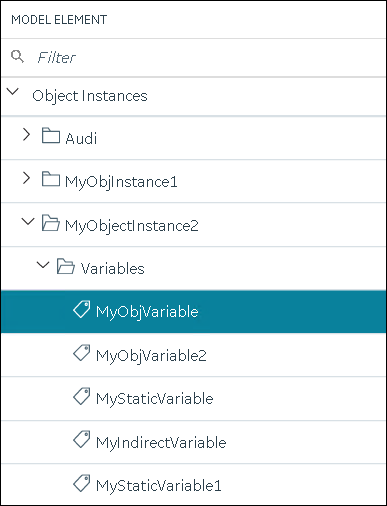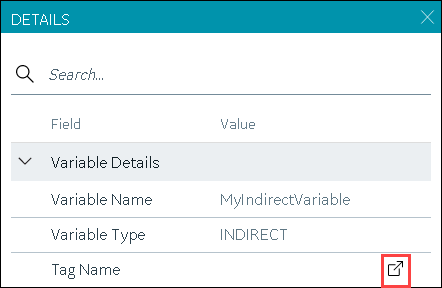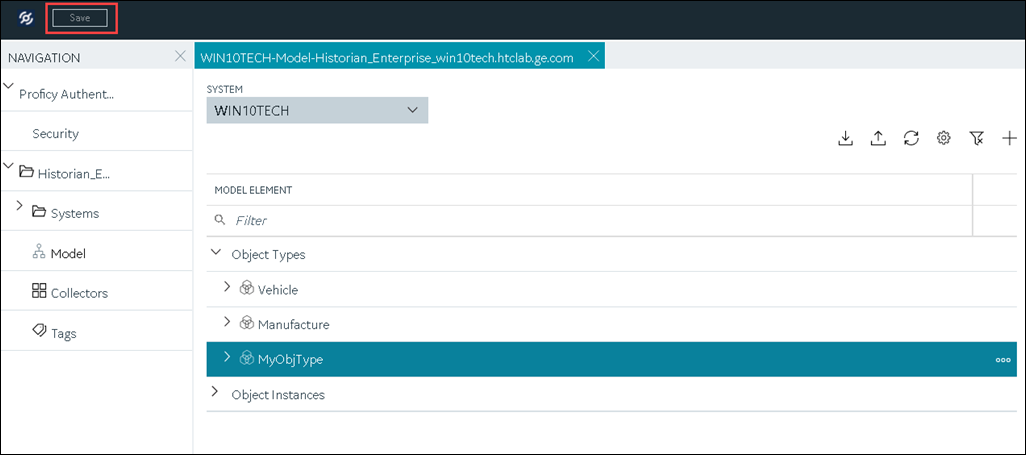Collect Data for an Indirect Variable
Before you begin
- Create a collector instance using which you want to collect data for the variable.
- Add the tag that you want to map with the variable.
About this task
Important:
- If the name of a tag associated with a variable in a model contains a period (.), you cannot import the tag while importing the model into a Historian system.
- If you want to later delete the tag, first remove the mapping between the tag and the variable.
Procedure
- Access Configuration Hub.
-
In the NAVIGATION section, select
Model. Alternatively, you can select
Systems, and then in the row containing the system in
which you want to create a model, select
 , and then select Browse
Model.
The Model section appears.
, and then select Browse
Model.
The Model section appears. -
Under Object Instances, expand the object instance,
expand Variables, and then select the variable whose data
you want to collect.

The details of the variable appear in the DETAILS section.Note: If the DETAILS section does not appear, in the upper-right corner of the page, select , and then select
DETAILS.
, and then select
DETAILS. -
In the DETAILS section, in the Tag
Name field, select
 .
.
The Tag Selection: <variable name> window appears. - Select Search to search for tags.
-
Enter the search criteria, and then select Search. You
can enter a name or a value partially or use the wildcard character asterisk
(*). You can add more search criteria by selecting Add
Attribute.
The list of tags are filtered based on the search criteria.
- Select the collector tag that you want to map with the variable, and then select Apply.
-
In the upper-left corner of the page, select Save.

The tag is mapped with the variable. All the data that is collected for the tag is now stored in Historian (or in a cloud destination as configured in the collector instance).